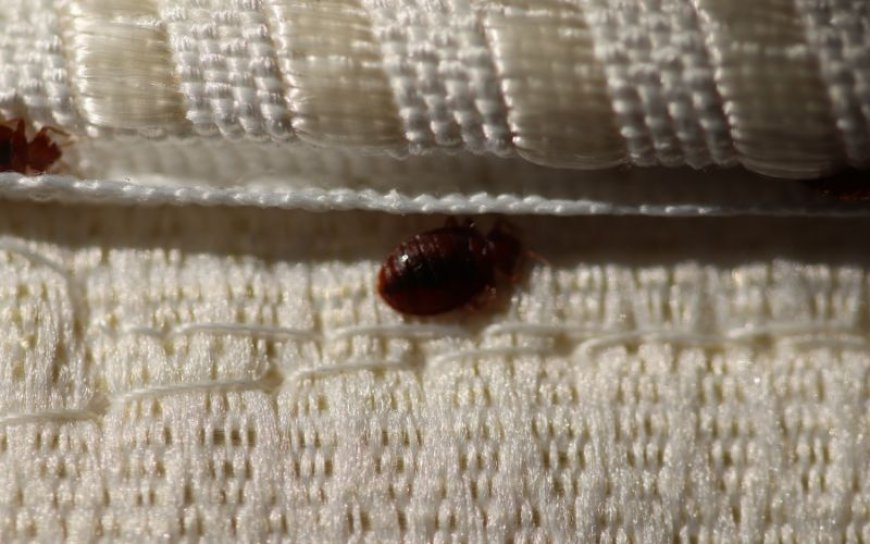Bedbug Control and Prevention: Effective Pest Control Solutions
Practical advice on controlling and preventing bedbugs in your home. It explains how to identify bedbugs, effective pest control solutions like vacuuming, sealing cracks, and heat treatments, and tips for preventing infestations.

Bedbugs are tiny pests that can cause big problems. They hide in cracks, mattresses, and furniture, feeding on human blood, especially at night. While they don’t carry diseases, their bites can be itchy and lead to sleepless nights. To get rid of bedbugs, it's important to act fast with effective pest control solutions.
How to Identify Bedbugs
Bedbugs are small, reddish-brown insects about the size of an apple seed. They’re often found in beds, furniture, and crevices. Signs of an infestation include:
- Bites on skin: Small, red, itchy spots that often appear in clusters.
- Bloodstains on sheets: These can appear after bedbugs are crushed.
- Fecal spots: Tiny dark spots on mattresses, furniture, or walls.
Why Bedbugs Are a Problem
Though bedbugs don’t transmit diseases, their bites can cause allergic reactions in some people. Beyond the physical discomfort, bedbug infestations can cause mental stress and anxiety due to the difficulty of eradicating them.
Pest Control Solutions for Bedbugs
-
Identify the Source: Before treating, it’s essential to locate where bedbugs are hiding. Inspect beds, couches, and cracks around the house.
-
Vacuum and Clean: Regularly vacuuming floors, furniture, and mattresses helps remove eggs and bugs. Wash bedding, curtains, and clothing in hot water to kill bedbugs.
-
Seal Cracks and Crevices: Bedbugs love to hide in small spaces. By sealing these areas, you limit their ability to spread.
-
Use Heat Treatments: Bedbugs die at temperatures above 120°F. Using a professional heat treatment is a powerful way to eliminate infestations.
-
Chemical Treatments: Sometimes, insecticides are necessary. Make sure to use products specifically designed for bedbugs and follow the instructions carefully. Hiring professionals for this step is often the safest option.
Preventing Bedbug Infestations
- Check secondhand furniture: If you buy used furniture, inspect it thoroughly for signs of bedbugs before bringing it home.
- Use bedbug-proof covers: Encase your mattress and pillows in bedbug-proof covers to prevent infestations.
- Be cautious while traveling: Bedbugs can hitch a ride home in your luggage. When staying at hotels, inspect the mattress and keep your luggage off the floor.
- Regular inspections: Routinely check your home for signs of bedbugs, especially in common hiding spots like bed frames, mattresses, and furniture.
When to Call a Professional
If DIY methods don’t work or the infestation spreads, it’s time to call in professional pest control. Experts use advanced techniques like heat treatments, chemical solutions, and thorough inspections to ensure bedbugs are completely removed.
In Arizona, companies like Arizona Pest Solutions offer professional pest control services tailored to bedbug infestations. They focus on safe and effective methods to keep your home bedbug-free.
FAQs
How fast do bedbugs spread?
Bedbugs can spread quickly, especially in cluttered environments. They hide in small crevices and can travel through walls, luggage, and used furniture.
Can bedbugs survive without feeding?
Yes, bedbugs can live for months without feeding, making it difficult to get rid of them without professional help.
Are bedbug bites dangerous?
While bedbug bites aren't dangerous, they can cause itchy, red welts and lead to allergic reactions in some people.
Dealing with bedbugs can be stressful, but with the right pest control solutions, they can be effectively managed. Don’t hesitate to take action and, if needed, seek professional help to keep your home safe and comfortable.

 johnbagby
johnbagby 










